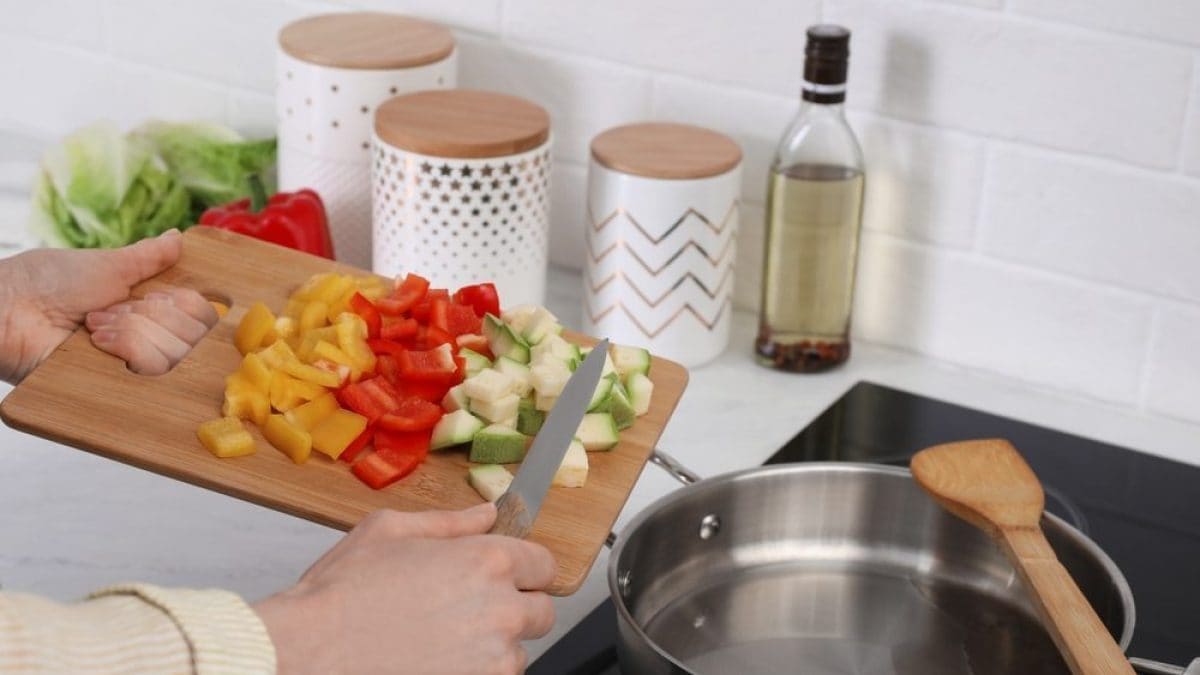
Stir-frying is one of the easiest cooking techniques to learn, which is why it's also one of the most popular: it allows you to quickly cook different types of foods, browning them to perfection but also blending the flavors, especially when preparing first courses. But is stir-frying really that easy? Yes, as long as you follow a few basic rules that allow you to get the most out of this type of cooking: precisely for this reason, it's important to know the most common mistakes and the ways you can easily learn to avoid them.
1. Stir-Frying Unsuitable Foods
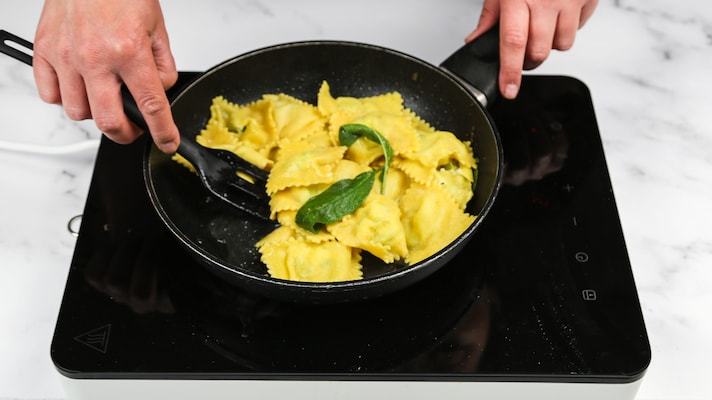
Let's start with a basic rule that many people overlook: not all foods are suitable for pan-frying. In general, fresh foods or foods that require quick cooking and that you want to keep fairly crispy should be pan-fried. This category includes vegetables and mushrooms, meats like chicken, turkey, or other white meats (always cut into bite-sized pieces), game, as it browns easily and requires little cooking time, and some seafood, such as shrimp and clams. This method is also useful for binding different foods, be they meat, pasta, or vegetables, with butter or other sauces. Avoid, however, all foods that require longer cooking times (such as ground meat), foods that tend to stick together, such as fish, and foods that are particularly watery because they would release too much moisture (such as zucchini).
2. Not Preparing Food and Utensils
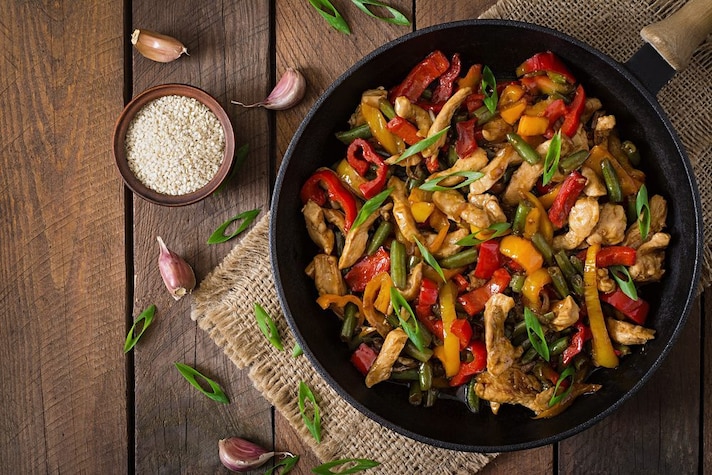
The stir-frying technique relies on very quick cooking, which is why before you start cooking, it's best to have everything you need ready and on hand, including the ingredients (pre-prepared if the recipe calls for it) and all the utensils you'll need. In technical jargon, this is called "preparing the line," and it's a crucial habit when using a technique that requires relatively little cooking time because it allows you to stay focused on the cooking process and follow it correctly.
3. Using The Wrong Pan

Choosing the right pan is crucial for any cooking technique, and getting it wrong can completely compromise the outcome of the recipe. For stir-frying, the best choice is a nonstick cast iron pan with high sides and a thick bottom: the material and bottom allow for good heat conduction, essential for browning foods evenly, while the high sides help both retain heat longer and prevent food from falling out as you move the pan. Alternatively, a wok is also a good option, as it has a similar shape and allows you to achieve the same results as a cast iron pan.
4. Not Using The Right Oil
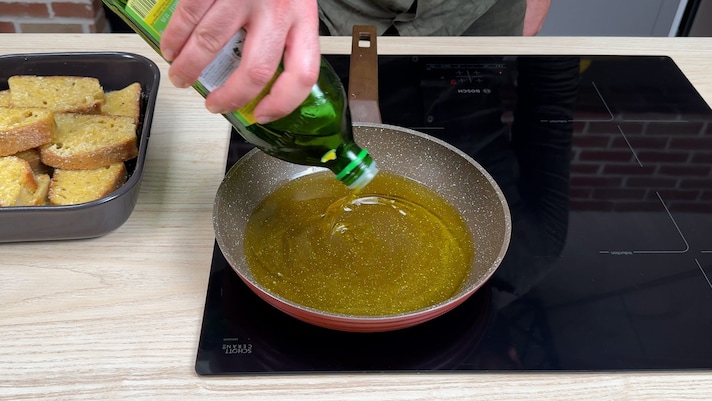
For sautéing, you'll need an oil with a high smoke point, usually olive oil or peanut oil. Both are suitable, just like for frying. Just remember that the former will have a stronger flavor, while the latter will be more subtle. The choice is yours, depending on the dish you're cooking. If you're sautéing Asian dishes, you can also use sesame seed oil, which has a clean, bold flavor, but be careful not to overheat it.
5. Cutting Food Incorrectly

It's one of the most important rules, but also one of the most underrated: to sauté foods properly, the size of the cuts is crucial. Vegetables or meat cut too thickly and of different sizes lead to uneven cooking, resulting in food that's partly overcooked and partly undercooked. To ensure that the ingredients cook thoroughly, it's important to cut them into small pieces, all of the same size.
6. Not Softening The Meat

This error specifically concerns cooking meat, but it's important to be aware of it because it can make the difference between an excellent dish and a terrible one. When sautéing, meat is cooked over high heat, which can quickly become tough. How can you avoid this? Don't skip the step of tenderizing the meat before cooking it: whatever type of meat you use, you should first marinate it with a marinade of your choice, choosing from those best suited to the food you're preparing.
7. Adding Seasonings Too Soon
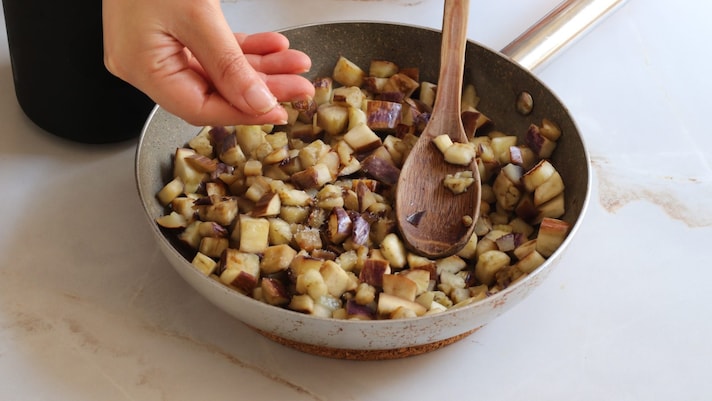
Adding seasonings too early in the cooking process can ruin the success of your stir-fry. Remember that this technique requires a fairly high flame, so you need to carefully consider when to add them: for example, spices and herbs should be added towards the end of cooking to prevent them from burning, and it's even better if you lower the heat a bit. The same goes for salt: if you add it too early, it stimulates the evaporation of the moisture, so never add it before halfway through cooking, or even near the end. If you need to add wine or liqueurs, do so immediately after browning the ingredients, over a high flame, to evaporate the alcohol quickly.
8. Should You Mix or Not?
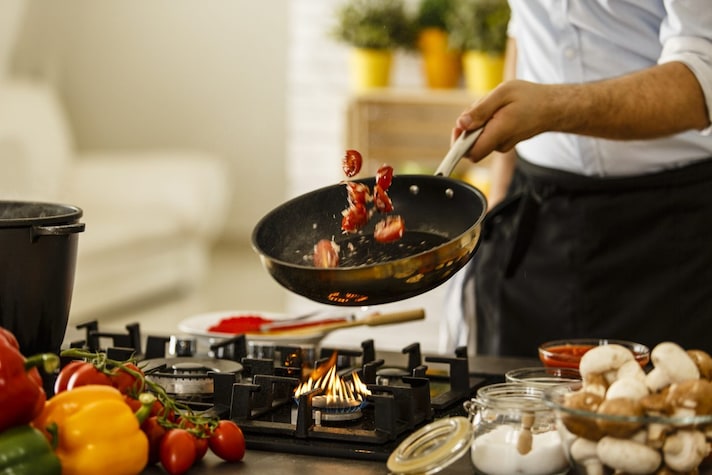
In theory, the rules dictate that when sautéing food in a pan, you should never stir the food you're cooking: this is called stirring because you only need to hold the pan by the handle and stir it with your wrist. In reality, we've all tried to hurry things along and stir with a wooden spoon: it's not a huge mistake, but avoid stirring when the food is already cooked, or you'll ruin its consistency. If you absolutely must stir, remember to do it only during the initial phase of cooking.
;Resize,width=767;)
